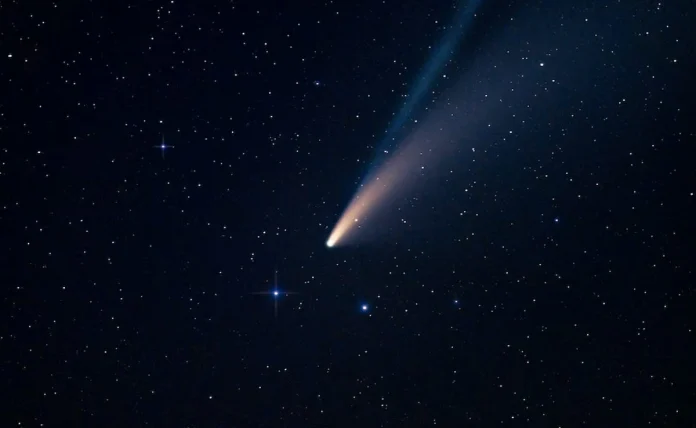A massive comet known for its unusual “horned” appearance has experienced an explosion and is now moving in the direction of Earth, scientists have reported. This comet, named 12P/Pons-Brooks, is noteworthy for its cold volcanic activity. Initially discovered by Jean-Louis Pons in 1812, it’s one of the rare comets known to have active ice volcanoes.
The comet’s size is remarkable, with a diameter of about 18.6 miles, equivalent to the size of a small city. To put it in perspective, Mount Everest, the Earth’s highest peak, is approximately 5.5 miles tall. The comet’s distinctive horn-like shape resulted from an explosion caused by solar radiation on its interior, increasing pressure and forcing its icy material out through openings in its shell.
According to Richard Miles, a member of the British Astronomical Association (BAA), the two “horns” could be due to a uniquely-shaped cryovolcanic vent with an obstruction causing material to be expelled in an unusual manner. Some experts have pointed out that the comet’s irregular coma shape gives it a resemblance to a science fiction spaceship, specifically the Millennium Falcon from Star Wars.
The BAA has been closely monitoring the comet, and on October 5, they observed the second explosion. Comet 12P became notably brighter than usual due to the additional light reflecting from its expanded coma.
Images of the explosion were captured by Jose Manuel Perez Redondo using a 2.0-meter Faulkes Telescope North on the Hawaiian island of Maui. While the comet is currently headed in the direction of Earth, it will be some time before it approaches our planet.
According to Live Science, the comet is anticipated to reach its closest point to Earth on April 21, 2024. Following that, it will be propelled back into the solar system and is not expected to return until the year 2095.


